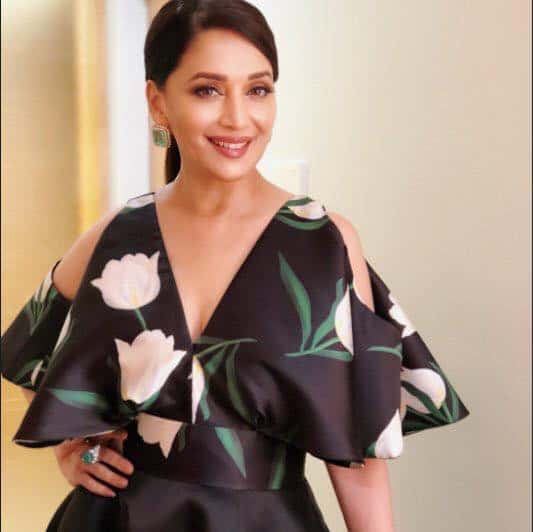Bollywood actress Madhuri Dixit, who has made her debut in Marathi cinema with Bucket List, says the regional film industry has evolved in terms of content and production values, which has made it appealing to the young generation. Most young film industry aspirants who live in Mumbai, first target Bollywood instead of trying their luck in Marathi cinema.
Asked about it, Madhuri told IANS: “If you want to try your luck in Marathi film, you have to be Marathi speaking. If you are not, then you tend to try your luck in Hindi cinema.
“Also, Marathi films (earlier) did not have the appeal we have today. It is more evolved and more appealing to the young generation. Technically, its production values are no less than a Hindi film.”
She said films like Natsamrat, Court and Sairat have come and changed the scenario too.
“Now thanks to the subtitles, more people have access to Marathi films, and you never know how Marathi films will be more appreciated by people in future.”
What stopped her from doing a Marathi film all these years despite knowing the language?
“In my case, in the first place, I had no ambition to become an actress. I was happy doing my dance, acting in school plays, my study and everything. Films happened to me, so I just started with Hindi films and continued doing that.”
Madhuri has done her share of female-centric films in the 1990s era. But according to her, now the definition of that genre of films has changed.
“I think writers understand the women better today than in our earlier days. Therefore, they are writing much better characters for us. I think the definition of female-centric cinema has changed now and that is very interesting for all of us.
“Earlier it used to be a woman taking revenge, someone who was victimised rising like a phoenix… a woman doing lot of action….Such kind of films were considered female-centric film. Now it is of a slice of life,” she said.
The actress, pointing to her career graph, said: “I was fortunate enough to play a various character from the beginning of my career. So whether it is ‘Tezaab’, ‘Dil’ or ‘Beta’… My character has her own mind.
“In today’s writing, women are treated on a cerebral level. Characters are close to reality.”
Citing the example of Vidya Balan’s Tumhari Sulu and her latest release Bucket List, she said: “These characters are housewives in their happy space. It is much relatable for all of us as it deals with daily life. That is the fun to play these characters.”
According to her, such characters celebrate the idea of keeping the spark of life alive.
“In my film, the character does not have any larger than life wishes to fulfil because the idea is we can find the joy of life in the small things. We women tend to lose ourselves in family life.
“The fact is, if you keep the spark of life alive, relationships around you will also be more in harmony,” said the multiple award-winning actress.
Having started her career in 1984, Madhuri has observed the transformation of the the film industry over the last three decades and more.
Is there anything she misses out on from the old days, Madhuri said: “The bonding. Earlier, whenever we used to shoot a film, it used to become a family. We used to share a warmth and closeness among people. It is missing now.
“Nowadays, after the shot, actors are into their vanity van, busy in social media. So, interaction with each other is not that much.”
On the extensive preparation that actors come with in the film industry today, Madhuri said: “I disagree on that. No matter how many shifts you are doing, as an actor, when you are before the camera, you are the character.
“We all have our way to get the mind frame of the character right. That is an internal process one cannot explain. But the process or preparation people are talking more about is of physical preparation.
“An actor is gaining or losing weight. Of course, that luxury was not there earlier when one actor is making three films, running around three sets.”
She is currently busy shooting for “Kalank” and “Total Dhamaal”.
IANS

